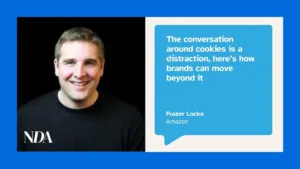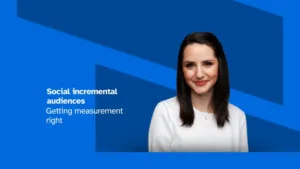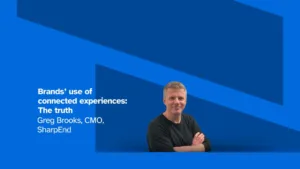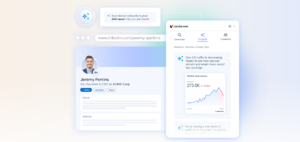By Claire Simpson, Associate Director at Hard Numbers
Almost a year ago, ChatGPT entered our lives. And it sparked a gear shift in the AI conversation: from a distant promise of future potential to a mainstream dialogue on its applications here and now.
The use cases of Large Language Models (LLMs) are immediately apparent, endlessly exciting and, at times, downright scary. For marketers, they represent a critical tool for improving productivity. Both in scaling content production and enabling deeper market analysis and insights.
While Open AI has been the de facto market leader since launch, it’s no longer the only game in town. Big Tech rivals from Meta to Google have lined up to challenge ChatGPT’s dominance. Not to mention the slew of generative AI startups capitalising on a hungry VC market.
Much like the streaming industry, increased choice means increased costs for users. As the market fragments, it can be difficult to determine which AI models are best suited for your goals.
So, let’s dive into the pros and cons of current market leaders, to better navigate this saturating landscape.
LLM market leaders: pros and cons
ChatGPT-4
OpenAI’s brainchild kickstarted the AI arms race and has continued to roll out impressive new capabilities. One key differentiator is its plugin store.
Here, users of its $20 per month ‘Plus’ plan can access over 500 third-party tools that enrich its core functions. Popular plugins for marketers include Zapier, Canva and Speedy SEO Marketing.
OpenAI recently resurrected its ‘Browse with Bing’ plugin following a three-month hiatus. This provides ChatGPT with access to real-time information as standard. Other web browsing plugins like WebPilot and Link Reader are also available.
Then there’s Advanced Data Analysis (formerly Code Intepreter). This function can interpret and execute code, analyse data from file uploads and generate visualisations. It can help marketers better understand customer behaviour, as well as analyse campaign data and market trends.
If that wasn’t enough, OpenAI unveiled two new features in the last month. First, the integration of its AI Image Generator DALL-E 3, allowing users to create images directly in ChatGPT.
Second, the long-anticipated rollout of vision and voice capabilities. ‘Plus’ users can now interact with ChatGPT via voice chat and create synthetic voices from recordings of real speech (Orwellian much?). You can also upload images for it to analyse and understand.
These multimodal capabilities make ChatGPT a leading choice for marketing pros. But such functions remain ring-fenced for paid users. Then there’s the prompt limit, capped at a modest 50 messages every three hours.
Claude
So what are the alternatives? Anthropic has emerged as a leading competitor to OpenAI in 2023. It recently attracted some serious dough from one Mr Bezos.
Most notably, its generative AI assistant Claude boasts a 100k context window. That’s 75,000 words. It can read hundreds of pages of text and produce longer responses than its competitors. This means marketers can summarise whitepapers, other long-form content or even multiple documents, to access insights more quickly.
Claude arguably has the most ‘conversational’ feel of the leading LLMs, too. Designed as a collaborative assistant, it’s adept at producing natural responses to user prompts. And responds well to efforts to train it in brand tone of voice.
But Claude doesn’t support internet access and is currently only available in the UK and US. Its paid plan is somewhat lacklustre. The only ‘premium’ feature being five times the usage limit of the free model.
Bard
Google missed the boat on AI when ChatGPT stole the march last year. But its Bard model is developing into a viable alternative.
It has internet access via Google Search, natch. And integrates with popular Google apps like Gmail, Google Docs, Drive and Maps through ‘Bard Extensions’. This is great for marketing teams that run on Google Workspace, introducing AI capabilities into daily workflow.
Bard has a neat ‘shared conversations’ feature, which allows you to continue conversation threads shared by other users. It’s also introduced a fact-check button, ‘Google It’, to verify the accuracy and source of its responses.
Like ChatGPT Vision, you can upload an image to Bard and ask questions about it. This is handy for generating product descriptions, alt text or image captions.
And, it’s totally free.
Yet, Bard feels a bit… clunky. It doesn’t have the conversational feel of other models. In part because it’s built on a research model (to the detriment of its writing capabilities). And due to it serving responses in full rather than offering the dopamine hit of generating each word on screen. Admittedly a small gripe.
What’s next?
There are of course more LLMs vying for market dominance, including Meta’s open-source LLama model. This is a double-edged sword for users. On the one hand offering greater choice. On the other, more confusion – and cost.
Seeking to combat this issue is Quora. Its AI aggregator Poe offers a platform to chat with multiple LLMs in the same place… Think of it like a cable TV bundle.
It currently supports ChatGPT-4, Claude, Google PaLM, Llama 2 and Stable Diffusion XL, democratising access to leading LLMs in a single, easy-to-use interface. And more aggregator apps could be on the way, combining AI models for better outputs.
We’re already seeing this with AI ‘wrappers’ (AI apps built on top of existing LLMs using an API integration). One popular marketing wrapper, AI copywriter Jasper, integrates with both ChatGPT and Claude. This combinatorial approach strengthens wrapper offerings. It brings together different LLMs to help users leverage the best models for sector use cases.
This reflects an emerging shift from broad to narrow. LLMs, by design, are versatile tools with a wide range of potential applications. But non-technical users crave sectorisation and accessibility. This summer, Salesforce unveiled MarketingGPT, an AI model tailored for the creation of sales materials. Similarly, Bloomberg launched and integrated a finance-focused GPT model into its software terminal.
While consolidation is inevitable long term, smaller custom-built and sector-specific LLMs are just getting off the ground. Buckle up!









